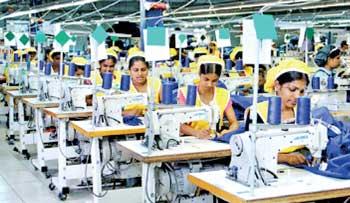25 Apr 2024 - {{hitsCtrl.values.hits}}
By Shabiya Ali Ahlam
 Sri Lanka’s apparel sector is witnessing a resurgence of interest, as brands reassess their purchasing strategies and are on the lookout for safe and secure homes to place their orders.
Sri Lanka’s apparel sector is witnessing a resurgence of interest, as brands reassess their purchasing strategies and are on the lookout for safe and secure homes to place their orders.
The Joint Apparel Association Forum (JAAF) shared that the apparel manufacturers have had several high-profile visits from brands, as buyers are returning to the country to meet with the suppliers and to work on long-range plans with their suppliers.
“This augurs well for the island, as Sri Lanka remains a strong player in the international arena, with a great track record of delivering prime quality products, on time and made in ethically and environmentally sound facilities,” JAAF Secretary General Yohan Lawrence told
Mirror Business.
He noted that as the world demands greater transparency and visibility of not just where their garments were made but also where the fabric and yarns come from, Sri Lanka being a small location, with great supply chain visibility, stands to benefit from this trend.
Furthermore, groundbreaking efforts are underway to modernise the Sri Lanka apparel supply chain, where there is significant focus on enhancing the sampling process. This is achieved with the introduction of sophisticated digital
sampling solutions.
Lawrence noted that whilst this won’t take out completely the need for physical sampling, the move to digital ensures that we allow for faster and better decision-making, whilst also reducing the number of samples being made.
“As the world moves in this direction, we see this as something that Sri Lanka can deliver against, giving us another differentiator,” he said.
However, the industry is still facing challenges with the strengthening of the rupee, which makes exports less competitive. This issue is further complicated by the mandatory conversion requirement placed on the exporters, as it provides them no flexibility to manage the
exchange loss.
“This is unfortunate, as we need to ensure Sri Lankan apparel is cost-competitive in an environment where price pressures are taking precedence.
Right now, there is an excess of supply over demand and this simply pushes the purchase price down. We have always argued for stable prices and exchange rates that reflect reality, as this allows manufacturers to cost more accurately and stand a better chance at being able to execute orders at prices that are agreed, maybe six to nine months before delivery,”
stressed Lawrence.
The exchange rate variation has been a point of great pain for the industry, as many stakeholders budgeted the Sri Lankan rupee to hover around Rs.330 against the
US dollar.
04 May 2024 3 hours ago
04 May 2024 3 hours ago
04 May 2024 4 hours ago
04 May 2024 7 hours ago
04 May 2024 8 hours ago